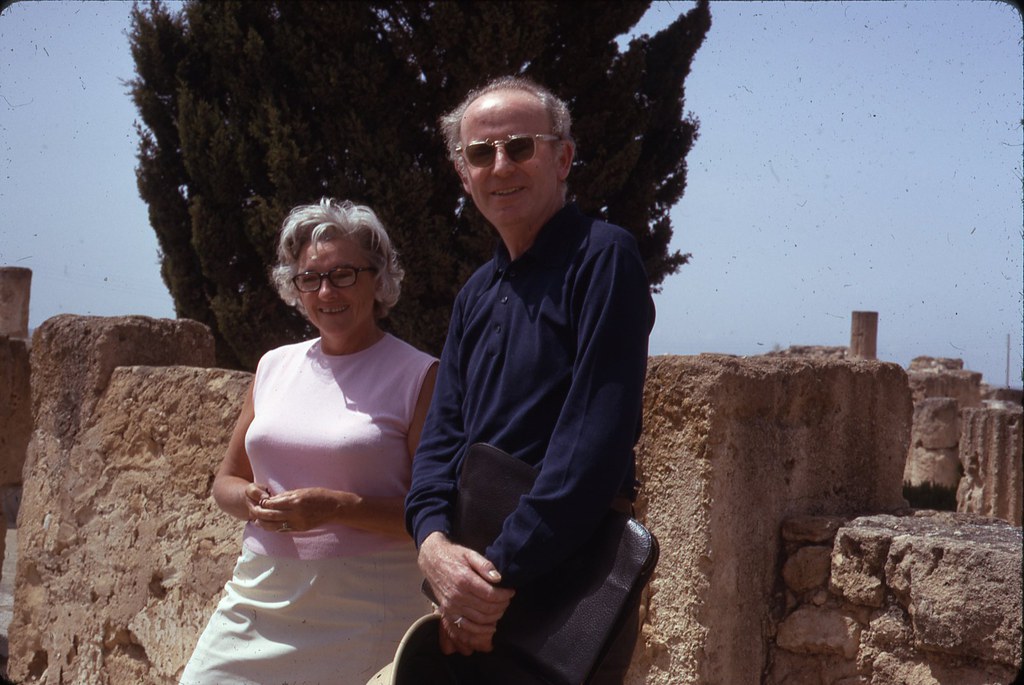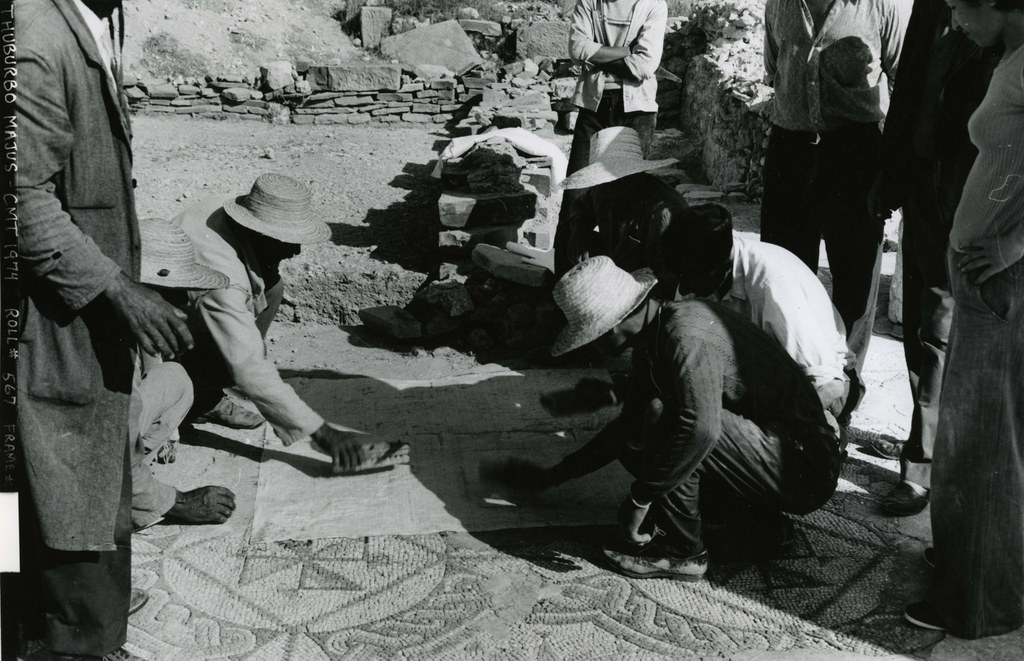The Corpus des Mosaïques de Tunisie (CMT) was launched in 1967 to create a catalog of ancient Roman and Late Antique mosaics in Tunisia by the efforts of Irving Lavin, professor at New York University’s Art History department, and Ernst Kitzinger, Arthur Kingsley Porter University Professor of Art History at Harvard University. Lavin and Kitzinger visited the sites every summer and were responsible, along with Margaret Alexander, for obtaining funding and permits for the CMT.

The project was administered through the Foreign Currency Program of the Smithsonian Institution and was sponsored by various institutions, such as Dumbarton Oaks and the University of Iowa. Alexander was selected as the project's American co-director in 1967, a position that she held until 1994.
The CMT team focused on clearing, preserving, and cataloging pavement mosaics found in private residences and Christian basilicas at four major sites in Tunisia—Utica, Thuburbo Majus, El Jem, and Carthage. They also relied on datable evidence buried in or near the mosaics, including coins and pottery fragments, to date the mosaics securely. Their work was published in a four-volume catalog of over one thousand mosaics dating from the first to fifth century CE. After completing the first project at Utica in 1972, the first volume was published in 1973. The final volume on Carthage was published in 1999, after Margaret Alexander’s death.

In order to supplement the information included in the collection, ICFA staff and interns conducted interviews with Marie Spiro, Associate Professor Emerita at the departments of Art History and Archaeology in University of Maryland, on November 16, 2011, and March 20, 2012. ICFA also interviewed Stephen Zwirn, Dumbarton Oaks Assistant Curator for the Byzantine Collection, on February 7, 2012.
Spiro was in Tunisia from 1970 to 1982, eventually becoming a research associate and then an assistant director of the project, while Zwirn worked with Alexander on the CMT project in the spring of 1973 as a graduate student. Spiro discussed analyzing all the aspects of a mosaic, from the material of individual tesserae to the composition of the mortar. Zwirn, on the other hand, shared stories about throwing water on the mosaics so the colors showed clearly for the photographers. Overall, Spiro and Zwirn described Alexander as someone with a diplomatic personality who was skilled in dealing with all the different people who wanted to visit the CMT project.
Additional Information
- Timeline: History of Margaret Alexander and the CMT project
- Related documents can be accessed at the Smithsonian Institution Archives